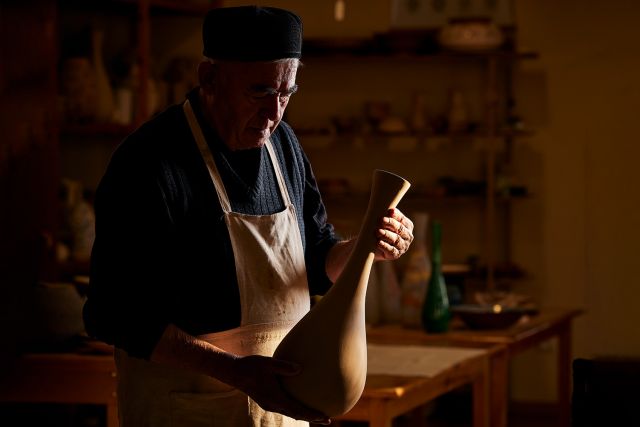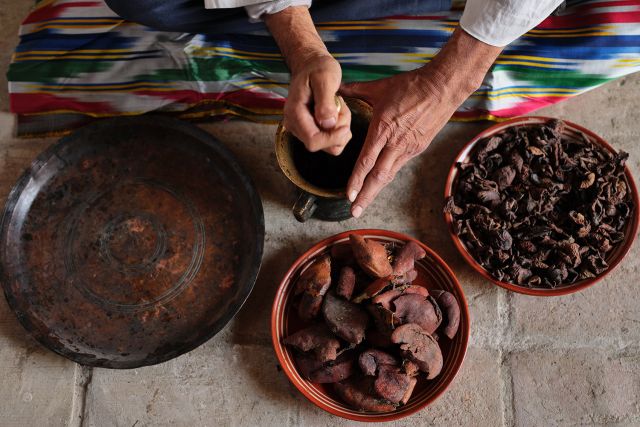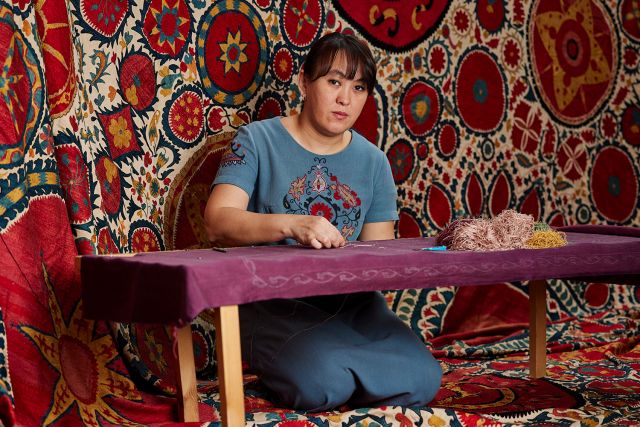These are Uzbek folding ethno knives made of ShKh-15 metal, easy to use and very light for travel and camping. In the middle of the connecting blades there is a symbol reminiscent of a sitting owl. The knives are made of mulberry and apricot wood that were left in the sun for more than a year. The black one is made of ram's horn.

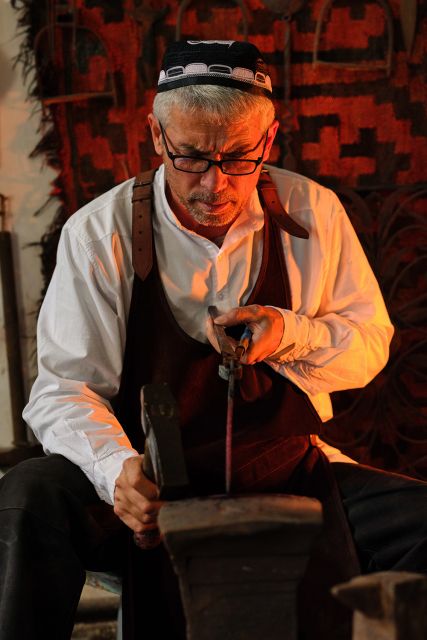
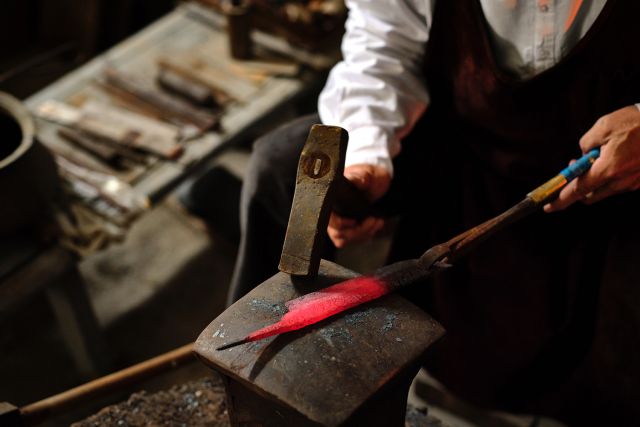
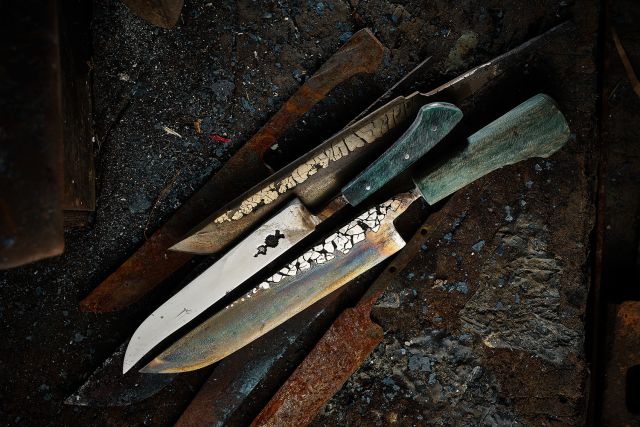
Khasan Umarov
- Xon Po’lat
- Knife maker
- Kokand, Uzbekistan
- Master Artisan
- Recommended by The Art and Culture Development Foundation
Daily 08:00 - 18:00
+998 911416889
In conversation with his creations
- • Khasan works in the workshop built by his grandfather
- • It takes at least two days to make a knife
- • He often recycles old metal items into simple knives
Khasan Umarov studied blacksmithing in the workshop of his father Aman and later inherited it. When he was young, he assisted with maintaining the necessary temperature in the forge and helped to decide on decorative patterns, but gradually studied the whole process of creating unique ornate knives. It takes several days of quenching to obtain the right quality of each piece. After that, Khasan decorates and brands them. His handles are usually made of horn as it is a traditional and very long-lasting material, that perfectly suits the purpose. Khasan says that he talks to his knives at each stage of their production. For him every knife has a life of its own, as well as its own character. Both making a knife and owning one require great responsibility.
Read the full interviewWorks
Photo: ©All rights reserved

Photo: ©All rights reserved
The handle is inlaid with traditional patterns and pearls from New Zealand, and between the handle and the hilt is a bolster (flower) engraved with traditional techniques and hot work shellac. The shellac is painted with natural colours. The blade has a Damascus steel pattern.

Photo: ©All rights reserved
This is a traditional Kokand curved knife with a Melchior sheath, red Swarovski stone in the middle, and enriched with traditional embossing. The sheath patterns are reminiscent of tabiat silhouettes.

Photo: ©All rights reserved
Hand engraved on the blade, these knives have fine patterns of inlaid colours applied onto the handle which is made of riveted yak horn. The handles are inlaid with Uzbek mother-of-pearl from the Amu Darya rivers. The edges of the eyepieces are inlaid with riveted nails.

Photo: ©All rights reserved
Hand stamped in rivets, the material for the handles of these knives is stabilised wood that was polymerised in vacuum. The handles are inlaid with mother-of-pearl from the Amu Darya rivers, as are the bolsters. The steel has natural Damascus patterns.





